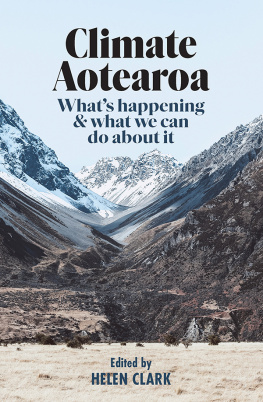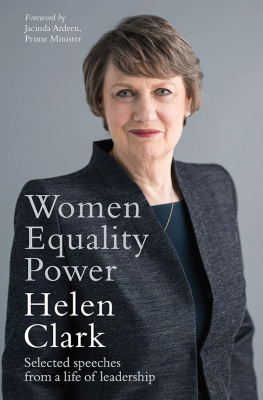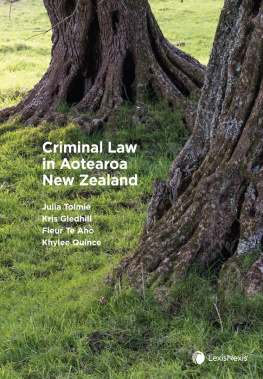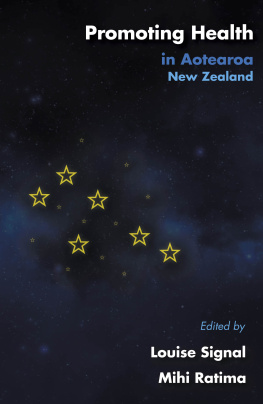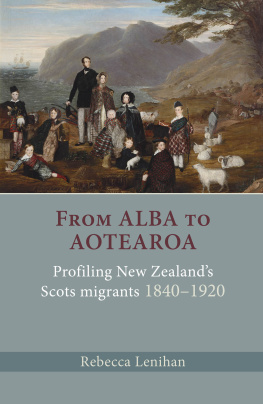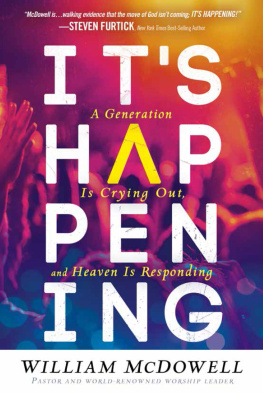Helen Clark - Climate Aotearoa: Whats happening & what we can do about it
Here you can read online Helen Clark - Climate Aotearoa: Whats happening & what we can do about it full text of the book (entire story) in english for free. Download pdf and epub, get meaning, cover and reviews about this ebook. year: 2021, publisher: Allen & Unwin, genre: Home and family. Description of the work, (preface) as well as reviews are available. Best literature library LitArk.com created for fans of good reading and offers a wide selection of genres:
Romance novel
Science fiction
Adventure
Detective
Science
History
Home and family
Prose
Art
Politics
Computer
Non-fiction
Religion
Business
Children
Humor
Choose a favorite category and find really read worthwhile books. Enjoy immersion in the world of imagination, feel the emotions of the characters or learn something new for yourself, make an fascinating discovery.
- Book:Climate Aotearoa: Whats happening & what we can do about it
- Author:
- Publisher:Allen & Unwin
- Genre:
- Year:2021
- Rating:5 / 5
- Favourites:Add to favourites
- Your mark:
- 100
- 1
- 2
- 3
- 4
- 5
Climate Aotearoa: Whats happening & what we can do about it: summary, description and annotation
We offer to read an annotation, description, summary or preface (depends on what the author of the book "Climate Aotearoa: Whats happening & what we can do about it" wrote himself). If you haven't found the necessary information about the book — write in the comments, we will try to find it.
Helen Clark: author's other books
Who wrote Climate Aotearoa: Whats happening & what we can do about it? Find out the surname, the name of the author of the book and a list of all author's works by series.
Climate Aotearoa: Whats happening & what we can do about it — read online for free the complete book (whole text) full work
Below is the text of the book, divided by pages. System saving the place of the last page read, allows you to conveniently read the book "Climate Aotearoa: Whats happening & what we can do about it" online for free, without having to search again every time where you left off. Put a bookmark, and you can go to the page where you finished reading at any time.
Font size:
Interval:
Bookmark:



First published in 2021
Copyright individual contributors
All rights reserved. No part of this book may be reproduced or transmitted in any form or by any means, electronic or mechanical, including photocopying, recording or by any information storage and retrieval system, without prior permission in writing from the publisher.
Allen & Unwin
Level 2, 10 College Hill
Auckland 1011, New Zealand
Phone: (64 9) 377 3800
Email:
Web: www.allenandunwin.co.nz
83 Alexander Street
Crows Nest NSW 2065, Australia
Phone: (61 2) 8425 0100
A catalogue record for this book is available from the National Library of New Zealand
ISBN 978 1 98854 763 3
eISBN 978 1 76106 167 7
Design by Megan van Staden
Cover image by Rachel Mataira
This book of contributions on the climate crisis is being published as New Zealand, along with the rest of the world, continues to experience another crisis of global proportions the Covid-19 pandemic.
The difference in nature of these two global crises is striking. Warnings of pandemic risk over the years have attracted far less publicity than those of the impact of climate change. When Covid-19 struck, however, its impact was rapid, dramatic and highly visible with far-reaching effects across human health, economies and societies. In the case of climate change, its impacts unfold over time as a slower onset disaster; if not addressed decisively, they will be far-reaching across the full spectrum of biological and non-biological systems.
Furthermore, while effective measures for addressing the impact of Covid-19 have emerged quickly such as physical distancing, hygiene, mask-wearing, testing and tracing systems, quarantine, treatment, and now vaccination, there is no parallel set of measures with immediate and dramatic impact for climate change mitigation all necessary measures for that take time to implement and to gain traction.
Then, such has been the extent of social and economic carnage wrought by Covid-19 that governments have been forced to act albeit with some doing so more effectively than others. In the case of the climate crisis, the same political dynamic and momentum have not been present, despite the staunch advocacy of many.
So, what of the book to hand? Does it provide a basis for optimism when it comes to tackling climate change in Aotearoa New Zealand? In the two opening chapters, Haylee Koroi and Jim Salinger set out current concerns within a longer-term perspective. Haylee points out that Mori have been dealing with the dynamics of the environment for centuries, and that New Zealand now has an opportunity to move into right relationship or whanaungatanga aligned with the patterns and symmetry of our woven universe. Jim Salinger reminds us that while differences in average temperature in our climate journey over centuries into the future may look small, they have a huge effect on the environment and the lives of plants and animals.
Three further chapters respectively by Rob Bell, Matt McGlone, and Simon Thrush and Andrew Jeffs bring us up to date on the specifics of what science has to say about the impacts of sea-level rise, the effects of climate change on native flora, fauna, and biodiversity, and the trajectory for aquatic environments. What these chapters show is that human settlement in Aotearoa New Zealand has already inflicted huge damage on natural ecosystems, that climate change will add to this over time unless contained and mitigated, and that many of the actions we need to undertake for climate change mitigation are what we should do in any case to protect our environment.
After this essential work of setting the scene with the bigger picture, the book moves to more immediate issues, actions, and solutions. Rhys Jones and Kera Sherwood-ORegan canvass the health impacts of climate change, warning that (A)s climate change worsens, health inequities are likely to be magnified. Activists Jason Boberg and Sophie Handford add to this the perspectives of people with disabilities and young people respectively, underlining the interest and energy of wider communities in climate issues and their implications.
Then, on solutions, Jamie Morton, a science journalist at The New Zealand Herald, argues that individuals can make a difference, and that it is important that news media and scientists avoid doomsday narratives and focus on positive messages. Rod Oram takes a glass half-full look at the issues posed by agriculture and food production, concluding that there is growing interest in regenerative agriculture among farmers, and that there are sound economic and environmental reasons for progressing down that path. Adelia Hallett of Carbon News notes that climate change is a classic tragedy of the commons because no one owns the climate, and so no one person or country has the incentive to take care of it. She concludes that by the time this book is published, Aotearoa New Zealand will have just nine years to halve its emissions.
Among the reassuring features of this book is that it demonstrates that New Zealand has a community of scientists, journalists and activists that is passionate and well informed about climate change and willing to press the case. As well, action we take will be positive for our health and wellbeing and for our natural heritage. We want to preserve our indigenous forests. We want to prevent irreversible damage to coastlines, estuaries, wetlands, and other ecosystems. Our major cities are overrun with private vehicles and in need of containing urban sprawl. Our train network needs rescuing. Our primary industries are in almost all cases reaching and surpassing their environmental limits. As well, they are not yet adding sufficient value to our economy to support our lifestyle, and are in danger of becoming increasingly out of touch with changing consumer attitudes around the world. Our major tourist attractions were fully stretched pre-pandemic.
All this we know, but the need for change has to date been consigned to the slow lane of political possibility. Yet, as the Covid-19 crisis shows, when the team of five million acknowledges the need to act, it does so to great effect. That is the sense of urgency with which the climate crisis now needs to be addressed.
New Zealand needs to revisit many features of its economic, social and environmental policy settings. The need to do so has often been foreshadowed during our pandemic experience. Both the pandemic and the climate crisis should be catalysts now for making the necessary changes.
I congratulate the authors on their contributions to this book and hope that New Zealand policymakers will draw on them as they design responses to the climate crisis. Like the pandemic, it has the potential to destroy our prospects, but it doesnt have to be that way. It is within our collective capacity to design and implement a more sustainable future.
Indigenous sovereignty activist and Mori public health advisor
Ka t tonu Whakarongorua,
E whakarongo ana ki ng tai e rua,
Ko te tai tama tne e papaki mai nei ki Hokianga,
Ko te tai tama wahine e papaki mai n ki Taumrere
Whakarongorua stands in perpetuity,
And I listen to the two tides
The tide of the male aspect which beats at Hokianga
And the tide of the female aspect which laps at Taumrere
Font size:
Interval:
Bookmark:
Similar books «Climate Aotearoa: Whats happening & what we can do about it»
Look at similar books to Climate Aotearoa: Whats happening & what we can do about it. We have selected literature similar in name and meaning in the hope of providing readers with more options to find new, interesting, not yet read works.
Discussion, reviews of the book Climate Aotearoa: Whats happening & what we can do about it and just readers' own opinions. Leave your comments, write what you think about the work, its meaning or the main characters. Specify what exactly you liked and what you didn't like, and why you think so.

